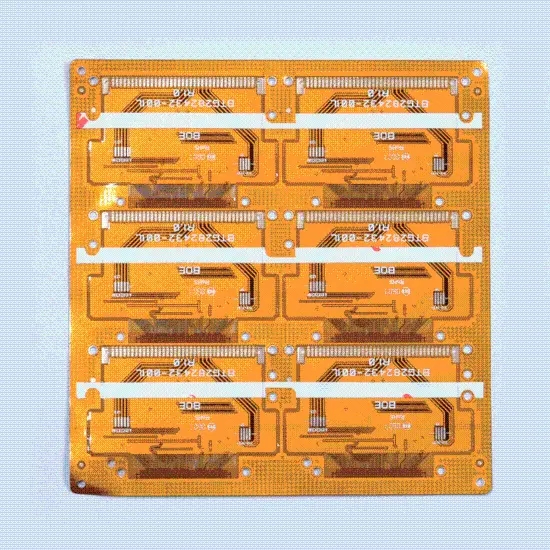Rigid-flex board production process

Production process: Because the rigid-flex board is a combination of FPC and PCB, the production of rigid-flex board should have both FPC production equipment and PCB production equipment. First, the electronic engineer draws the circuit and shape of the flexible board according to the requirements, and then sends it to the factory that can produce the flexible and hard board. The CAM engineer processes and plans the relevant documents, and then arranges the FPC production line production site FPC and PCB production lines are required to produce PCB. After these two soft and hard boards come out, in accordance with the planning requirements of the electronic engineer, the FPC and PCB are seamlessly pressed by a pressing machine, and then a series of details are passed to the final process. A combination of soft and hard board. A very important link should be the difficulty of the hard and soft board, and there are many details. Before shipment, a full inspection is generally required, because its value is relatively high, so as to avoid loss of related benefits to both the supplier and the demander. Advantages and disadvantages: Advantages: The rigid-flex board has both the characteristics of FPC and the characteristics of PCB. Therefore, it can be used in some products with special requirements. It has both a certain flexible area and a certain rigid area. Saving the internal space of the product, reducing the volume of the finished product, and improving the performance of the product are of great help. Disadvantages: There are many production processes for the rigid-flex board, the production is difficult, the yield rate is low, and the materials and manpower used are more. Therefore, its price is relatively expensive and the production cycle is relatively long. 1. Rigid-flex board is not cheap, why use rigid-flex board? When designing hardware, cost is often not a key element; first, reliability: Rigid-flex board can solve the problem of FPC installation reliability. The FPC is connected through a connector, which brings about installation costs, inconvenient installation, installation reliability problems, and easy short-circuiting, falling off and other problems. In a mass release of Hikvision
The barrel machine design of the goods saw the phenomenon of repairing the FPC and the PCB after the FPC was installed. Rigid-flex board solves the problem of FPC installation reliability. Second, the overall cost: Rigid-flex board, although the price per unit area has increased, but the cost of the connector is saved, while the installation time is reduced, the repair rate is reduced, the repair rate is reduced, and the productivity and reliability are improved . The use of mass-shipped products is often effective in reducing costs. So the calculated cost: Rigid-flex board area * Rigid-flex board unit price-processing time cost-FPC loosening and repairing cost * loosening probability-whether the management cost brought by fewer single board types is greater than the original PCB area * PCB unit price + FPC price +Connector price third, effectively improve signal quality. Since the connection is not made through the connector, the wiring continuity is better and the signal integrity is better. Traditional IPC uses FPC and connectors to connect the Sensor (video sensor) board and the main control board.
The use of rigid-flex boards can integrate the main control board and the sensor board, which solves many problems and also meets the structural design requirements of the drum machine.
2. Points to note in the design of rigid-flex board: A. The bending radius of the flexible boardneeds to be considered. If the bending radius is too small, it will be easily damaged. B. Effectively reduce the total area, optimize the design and reduce the cost. C. It is necessary to consider the structure of the three-dimensional space after installation. D. It is necessary to consider the optimal design of the number of layers of the flexible part of the wiring. 3. Consider whether PCBs with strange shapes can be printed after the development of 3D printing in the future? Avoid the weakness of FPC or rigid-flex board.